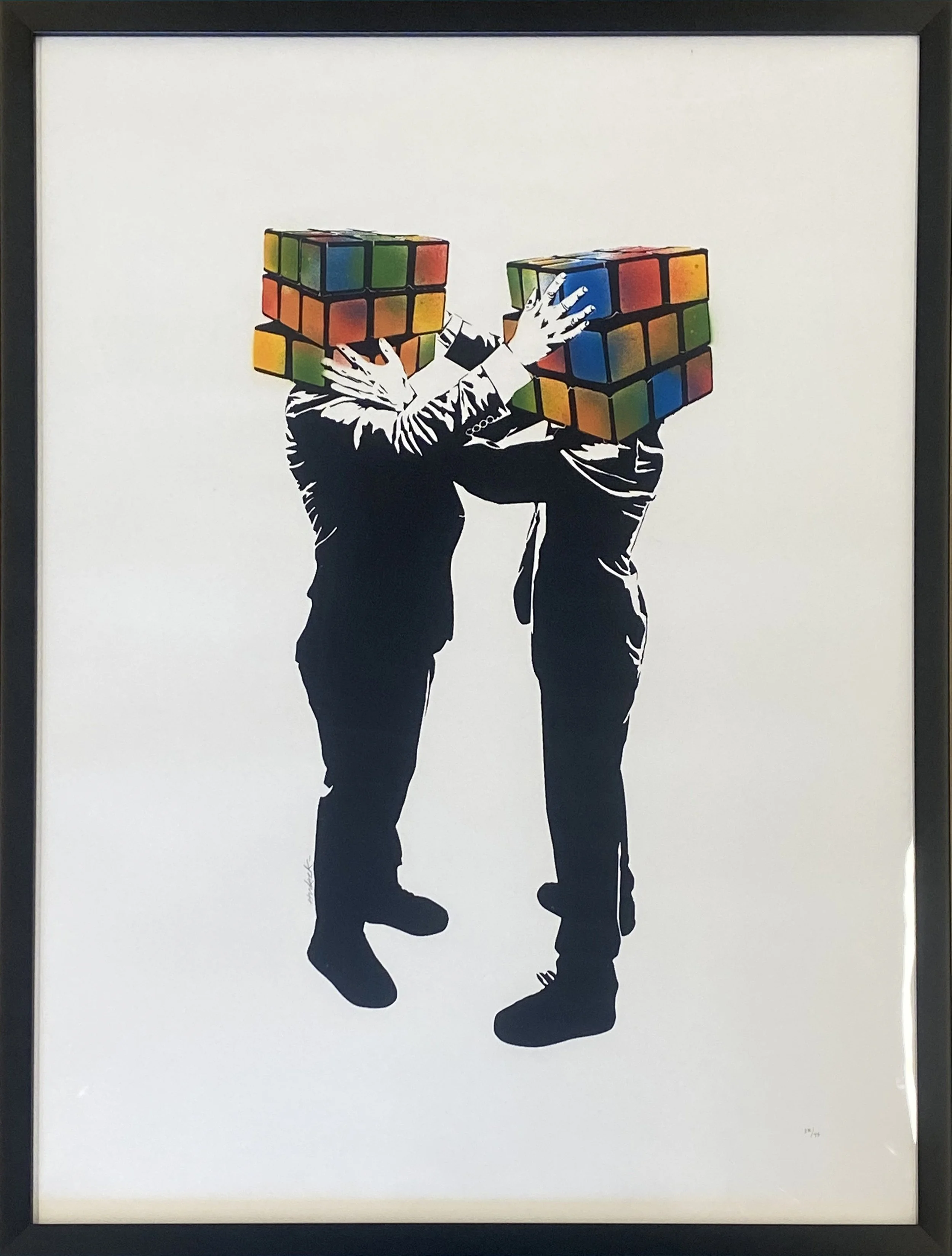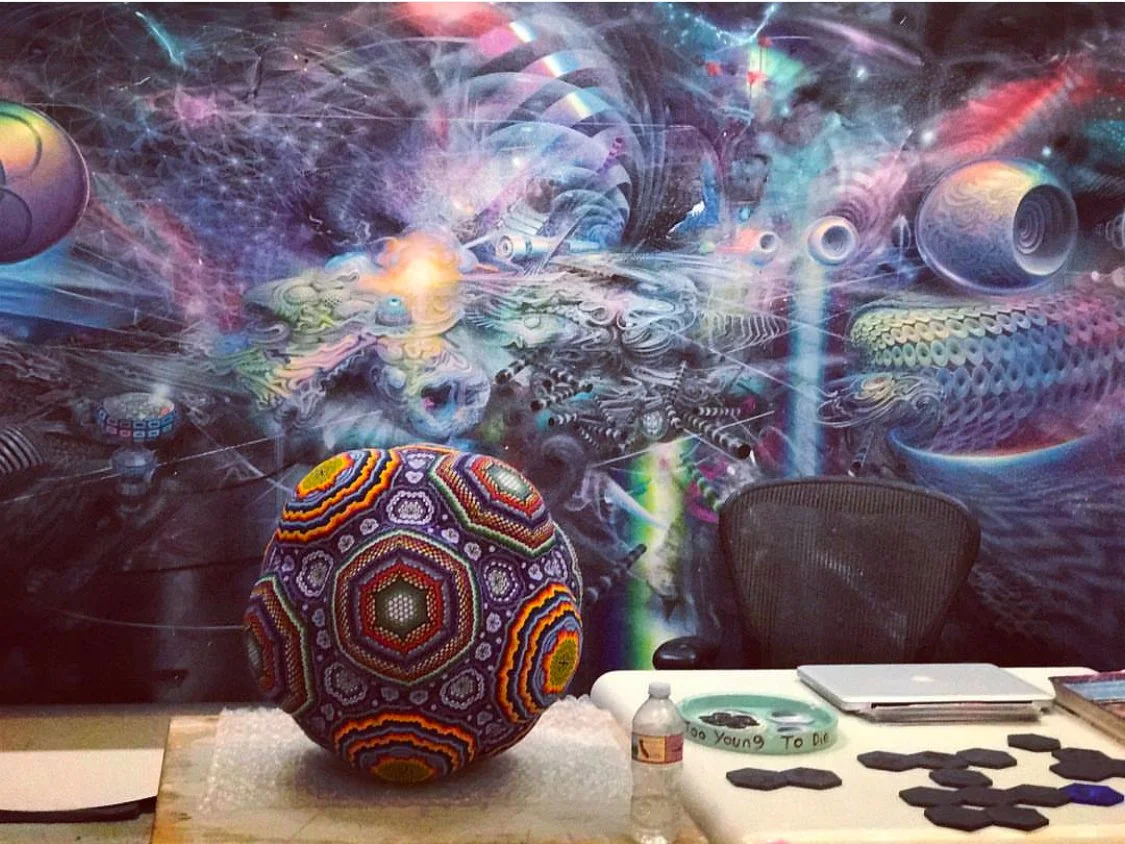"ABOUT"
" #alwayslate embodies a playful paradox that challenges conventional perceptions of time and punctuality."
"It suggests a deliberate embrace of imperfection and spontaneity, celebrating the idea that creativity and individuality often flourish outside rigid schedules."
"By owning "lateness," the brand conveys a sense of authenticity, rebellion, and prioritization of meaningful moments over arbitrary timelines."
"
"This ethos resonates with clients who value originality and depth over conformity, positioning #alwayslate as a symbol of thoughtful, unconventional design."
"ALWAYS LATE"... BUT WORTH THE WAIT.
"FEATURED ARTISTS"
FELIPE PANTONE
Felipe Pantone is an Argentinian-Spanish artist. He started doing graffiti at the age of 12. He graduated with a Fine Art degree in Valencia (Spain) where his studio is based. Pantone’s work deals with dynamism, transformation, digital revolution, and themes related to the present times.
Hijack
American, b. 1992
jeff soto
Josh Keyes
American, b. 1969
Mario Martinez (aka MARS-1)
American, b. 1969
PATRICK NAGATANI
American, b. 1945
“Felipe Pantone evokes a spirit in his work that feels like a collision between an analog past and a digitized future, where human beings and machines will inevitably glitch alongside one another in a prism of neon gradients, geometric shapes, optical patterns, and jagged grids.
Based in Spain, Pantone is a byproduct of the technological age when kids unlocked life’s mysteries through the Internet. As a result of this prolonged screen time, he explores how the displacement of the light spectrum impacts color and repetition.
“Color only happens because of light, and light is the only reason why life happens,” Pantone says. "Light and color are the very essence of visual art. Thanks to television, computers, and modern lighting, our perception of light and color has changed completely.”
For Pantone, his art is a meditation on the ways we consume visual information. Drawing inspiration from kinetic artist like Victor Vasarely and Carlos Cruz-Diez (who both worked with movement) his contemporary work often produces the sensation of vibration as the viewer’s position changes in relation to the work. Pantone works on various software and then is translated into murals, paintings, and sculptures which give tactile merit to what is occurring in the digital world.
Whether it’s exhibiting in museums and galleries around the world, transforming a 1994 Chevrolet Corvette into something futuristic, or painting the largest mural in Portugal, Pantone’s diverse applications are united by the intersection of technology and fine art.”
—Roger Gastman
Hijack is known for his distinctive artworks tucked away throughout the streets of Los Angeles. Armed with political savvy and humor, the artist carefully crafts his works around topics that hit closest to home. The artist is often personified by the use of his anti-authoritarian black cat stencil. Hijack focuses his efforts observing and waiting for the right moment to create. His balancing act of cultivating the public with a dose of humor allows for deep engagement within his varied themes. Often, Hijack’s characters are depicted to occupy a space that provokes a response, but in a calculated and clever way. His position in the street art movement is built around creatively pushing the boundaries on who we are as a society.
Street artist Jeff Soto explores the territory where pop imagery, graffiti, and surrealismconverge. Inspired by Max Ernst, Frida Kahlo, Andy Warhol, Amedeo Modigliani, and Paul Cadmus, Soto is a California figurative painter who grew up watching MTV, reading science fiction, and skateboarding. Teeming with odd characters and furry creatures, Soto’s allegorical paintings can be both apocalyptic and playful. In 2010, he began illustrating promotional posters for major bands such as Pearl Jam, The Black Keys, and Soundgarden.
Inspired by 18th-century aesthetics and philosophy, Josh Keyes paints animals in a style reminiscent of anatomical diagrams. His work is characterized by an attention to detail and to physiological accuracy. Keyes, however, does not place his animal subjects in their natural settings; rather, they are often in peril, displaced from their natural ecosystems into dioramic fantastical situations. These landscapes are frequently isolated and contain an incompatible mix of the natural and manmade. Keyes acknowledges that themes of migration and displacement frequently feature into his work as a form of his preoccupation with global climate change and the human impact on nature.
Mario Martinez (aka MARS-1) paints from a penetrating perspective of great depth. Viewers are drawn into his imaginative compositions, overflowing with colorful geometric and organic shapes, layered to form unique patterns and textures.
The artist signature style of vast, abstracted, quasi-extraterrestrial looking landscapes feature imagery of surreal distortions, contained within spherically convex transparent bubbles. Skillfully combining optical color blending with perspective line work, his painting techniques result in very three-dimensional forms, which echo the anatomy of architecture, and microcosmic structures of biology.
These 3-D qualities transcend into his sculptural work, as well. Mars-1’s distinctly individual aesthetic is not easily compared to the vision of his contemporaries or artists from past movements. His constantly evolving process continues to expand with each new series of work, seemingly beyond the reaches of even his own awareness.
Themes explored range from very scientific to more esoteric phenomena. From theoretical physics, metamorphosis and collective consciousness, to ufology and examining possibilities of otherworldly principles, the relative link between physical and life sciences are applied throughout. Transitional energies, natural multiplicity, helixes and spontaneous biological occurrences all come together, forming imagery with hypotheses beyond the scope of modern technology.
Patrick Nagatani (August 19, 1945 – October 27, 2017) was an American photographer and educator perhaps best known for his work relating to the unique history of Japanese Americans including their experience with internment camps.
Overview of Nuclear Enchantment
These large-format photographs characterized by an intense, sulfuric color, explore with profound wit and irony Nagatani's deep understanding of nuclear fear in our time.






